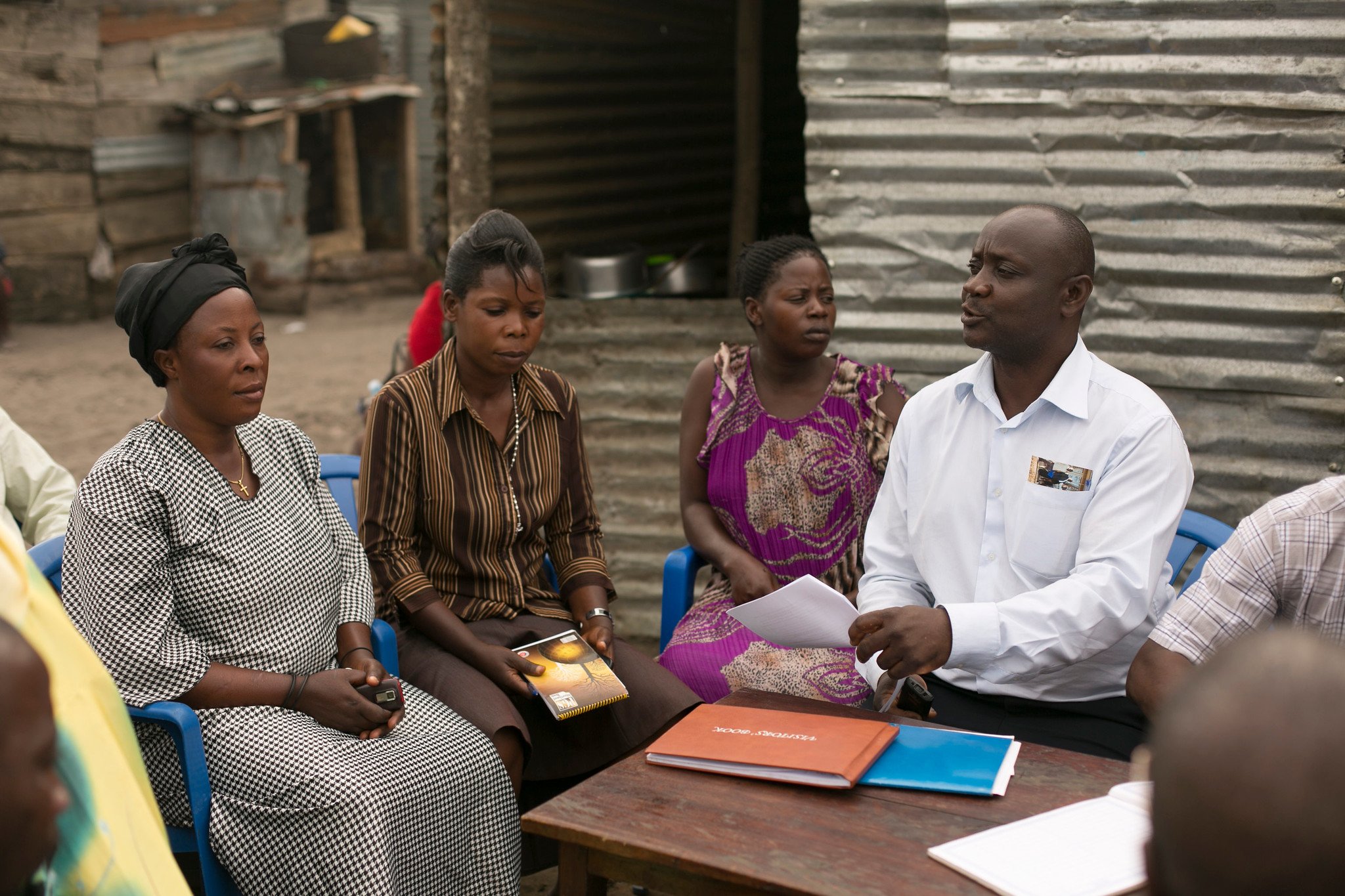
Socio-environmental wellbeing
Reducing urban heat in Kampala
Team Project
4 team members | 5 months | 2019
Client
Red Cross (The Netherlands)
Process
System thinking | Storytelling | Context research
Outcome
Community-based initiative | Prototype | Implementation strategy
Challenge
What can Red Cross NL do to help reduce urban heat in informal settlements?
Due to rising temperatures and the heat island effect, urban heat is becoming an increasing threat, causing more illnesses and mortality every year. In this project, Kampala city was used as a case to represent the problem globally.
System mapping to address the socio-environmental problem
When diving into the context of this project, we quickly found out that urban heat and the role of the Red Cross were far more complex than we imagined. It is more than just an environmental problem. To get a grip on the context, we did literature research, and numerous interviews with different experts, involving:
Environmental experts
Red Cross employees (both Dutch and Ugandan)
Local community leaders
People from the United Nations
And some Ugandan students
-
58% of Kampala’s waste is generated in low-income areas. So, most of it is coming from the slums.
80% of Kampala’s waste is uncollected and burned on the streets.
90% of households in Kampala rely on charcoal as their main energy source.
The fumes of burned charcoal and waste do not only increase urban temperatures (as carbon particles capture heat), but they are also very toxic to public health (causing cardiovascular and respiratory diseases)
These insights show that solving the issues around urban heat goes hand in hand with solving waste management, charcoal, and overall air pollution issues.
“If you want to tackle this complex problem, you have to do it together with the local community”
— Community leader, Kampala city
Community-based initiatives
In order for Red Cross to do something about waste management problems to reduce urban heat, they have to work together with not only governments, companies and institutions - but also involve and activate local communities. From this insight, we started exploring community-based initiatives in Kampala and found Kasanvu Environmental Group, which became a big inspiration for the project.
Kasanvu Environmental Group — example initiative
Kasanvu has taken it upon themselves to do something about the waste and charcoal issues in the slums of Kampala. They decided to turn organic waste into bio-briquettes. That way, are giving waste a new life (instead of burning it), and simultaneously providing a more healthy alternative to charcoal cooking.
At the same time, the organisation is being run by the local community, bringing more employment to the neighbourhoods, especially for women. However, unfortunately, their efforts are still deemed illegal because they cannot get permission from the government to operate.
This is mostly due to conflicting interests since waste is also a key source of income for the government - that they, therefore, prefer to regulate for themselves. But, we believed that this is the sweet spot where Red Cross could come into play.
Outcome
A strategic action plan to help Red Cross exercise its role as a facilitator.
Red Cross has the exceptional opportunity to bridge the gaps between all stakeholders. We concluded that Red Cross needs to exercise its role as a facilitator to bring governments, organisations, citizens, and local initiatives together and stimulate fruitful collaboration among them.
In that role, Red Cross can help initiatives, like Kasanvu, get off the ground, and truly make an impact. Adapting to this facilitator role is the most efficient way for Red Cross to make a significant impact on urban heat reduction, and create healthier and more sustainable living conditions in informal settlements worldwide.
We delivered an 8-step strategic action plan, in a brochure, explaining how Red Cross could adapt to such a facilitator role, and what the benefits would be. Accompanied, we also delivered a set of 3 posters for the Red Cross headquarters. And finally, we built a prototype to spark conversations around our project, and the Kasanvu initiative specifically.
Prototype as a conversation-starter
With this prototype, we made bio-briquettes ourselves from paper, and bio-waste (just like the Kasanvu initiative).
Pitching at Red Cross headquarters
At the end of the project, I pitched our project at Red Cross’ headquarters in The Hague. We also brought our prototype and the previously mentioned posters to spark discussions with Red Cross employees.
During our visit, we emphasised how important it is to support local community-based initiatives, and how much potential is still untapped here. Especially the prototype helped to raise awareness of how supporting the right initiatives allows Red Cross to truly make a big difference.
Something I learned …
To be a good listener
I believe that embracing different perspectives is key to any design project, but especially for such complex multi-stakeholder ones. This project taught me to really look from a systemic point of view - taking all stakeholders into account.
However, to be truly open and receptive to different views we need to be excellent listeners. This might sound simple, but what I have learned during this project, is that if we are unaware of this simple principle, we easily misinterpreted or miss out on the richest insights.


